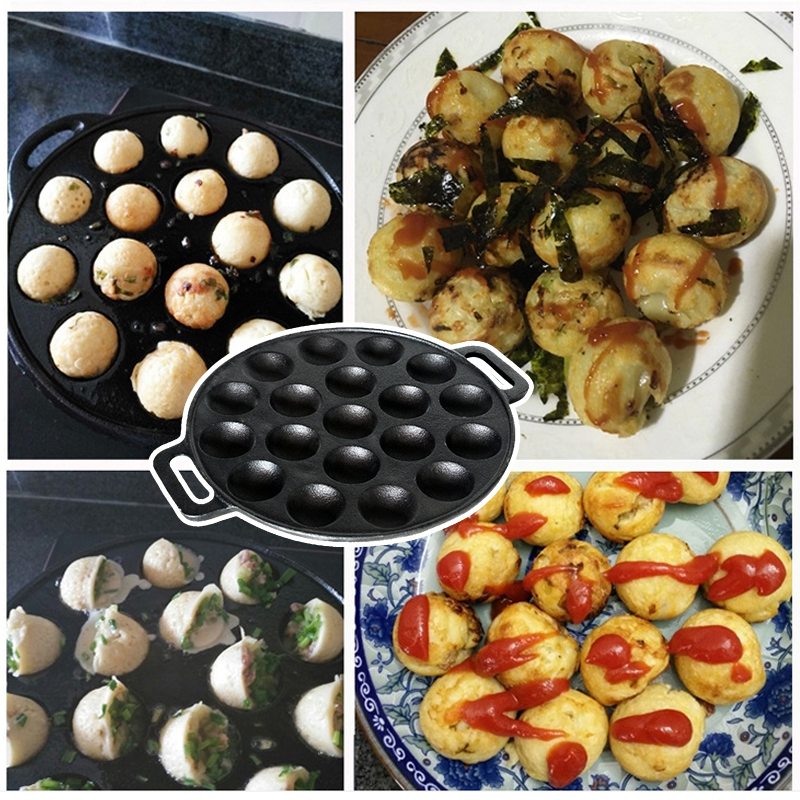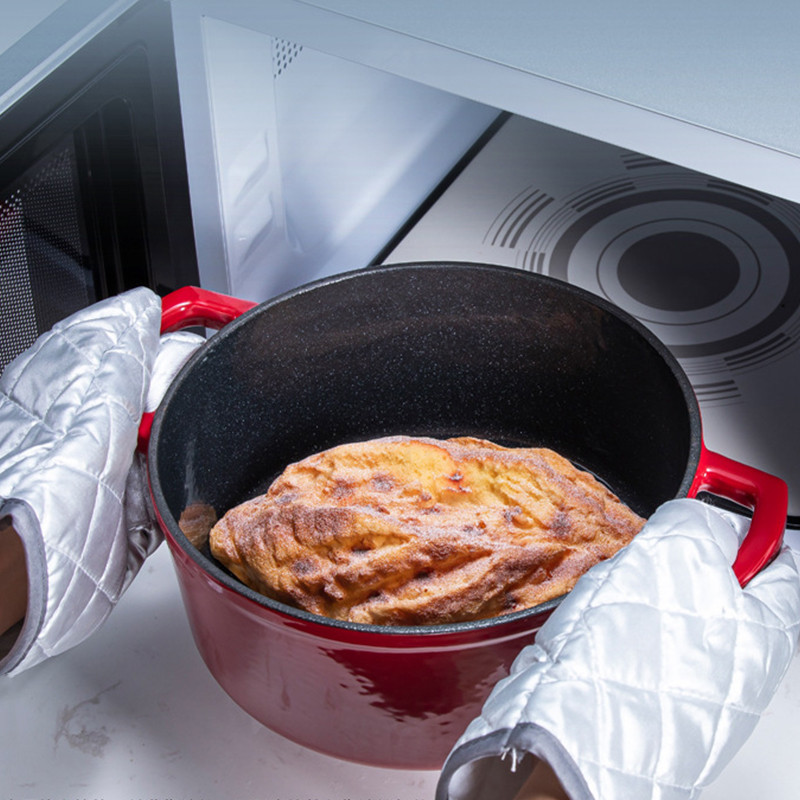Cast iron pot is very suitable for most families, easy to operate, and can make a lot of delicious food. So in order to prolong the use of the cast iron pot, what should we do? Next we will understand the maintenance method of cast iron pot together

First, clean the new pot
(1) Put the water in the cast iron pot, pour the water after boiling, and then small fire hot cast iron pot, take a piece of fat pork carefully wipe the cast iron pot.
(2) After a complete wipe of the cast iron pot, pour out the oil stains, cool, clean and repeat several times. If the final oil stains are very clean, it means that the pot can begin to use.
Second, maintenance in use
1. Heat the pan
(1) The cast iron pot needs an appropriate heating temperature. Put the cast iron pot on the stove and adjust the heat to medium for 3-5 minutes. The pot will be heated fully.
(2) Then add cooking oil or lard, and add food ingredients together to cook.
2. Cooking meat smells pungent
(1) This may be caused by the cast iron pan being too hot, or by not cleaning the meat before.
(2) When cooking, choose medium heat. After the food comes out of the pot, immediately put the pot in the running hot water to rinse, the hot water can remove most of the food residue and grease naturally.
(3) Cold water may cause cracks and damage to the pot body, because the temperature of the outside of the cast iron pot decreases faster than the inside.
3. Food residue treatment
(1) If it is found that there are still some food residues, then you can add some kosher salt in the cast iron pot, and then wipe with a sponge.
(2) Because the texture of coarse salt can remove excess oil and food residue, and will not cause harm to the cast iron pot, you can also use a stiff brush to remove the food residue.
Third, keep the cast iron pot dry after use
(1) Cast-iron pots look dirty with food stuck to them or soaked in the sink overnight.
(2) When re-cleaning and drying, steel wire ball can be used to remove rust.
(3) The cast iron pot is completely wiped clean, until it is completely dried, and then coated with a thin layer of linseed oil on the outside and inside surface, which can effectively protect the cast iron pot
Use of cast iron pot
Step 1: Prepare a piece of fat pork, must be more fat, so that the oil is more. The effect is better.
Step 2: Roughly flush the pot, then boil a pot of hot water, use a brush to clean the pot, brush the pot body, and brush all kinds of floating things on the surface.
Step 3: Put the pot on the stove, turn on a small heat, and slowly dry the water droplets on the pot body.
Step 4: Put the fat meat into the pot and turn it a few times. Then grab the pork with your chopsticks and smear every inch of the pan. Carefully and carefully, let the oil slowly percolate into the iron pot.
Step 5: When the meat becomes black and scorched, and the oil in the pan becomes black, take it out and then clean it with water.
Step 6: Repeat steps 3, 4, 5 again, repeat about 3 times, when the pork is no longer black, it is successful. So you can put the meat in batches, or you can cut off the last hard surface of the pork and use the inside.
Step 7: Wash the cast iron pot with clean water, dry the pot body, we can put a layer of vegetable oil on the surface, so that our pot is successful

The maintenance method of cast iron pot
Step 1: Take a cast iron pot, dip a cloth into water and a little dish soap, and wash the pot inside and out, then rinse the pot with water.
Step 2: Wipe the pot clean with kitchen paper, put it on the stove and dry it over low heat.
Step 3: Prepare a few pieces of fat pork, use tongs or chopsticks to hold the fat pork, turn on a low heat, and wipe the edge of the pot with the pork. Make sure you do it multiple times, every corner.
Step 4: Heat a cast iron wok slowly, then drizzle the oil around the edges with a small spoon. This action is repeated several times to ensure that the inner wall of the pot has been soaked in oil.
Step 5: Pour off the oil in the pan, leaving a piece of fat, and wipe the outside of the pan carefully.
Step 6: Wait for the pot to cool down, and scrub repeatedly it with warm water after it is completely cooled.
Step 7: Repeat the above steps 2 to 6 for 3 times, and leave the oil in the pot overnight after the last wipe
Wash the pot
Once you cook in a pan (or if you just bought it), clean the pan with warm, slightly soapy water and a sponge. If you have some stubborn, charred debris, use the back of a sponge to scrape it off. If that doesn’t work, pour a few tablespoons of canola or vegetable oil into the pan, add a few tablespoons of kosher salt, and scrub the pan with paper towels. Salt is abrasive enough to remove stubborn food scraps, but not so hard that it damages the seasoning. After removing everything, rinse the pot with warm water and wash gently.
Dry thoroughly
Water is the worst enemy of cast iron, so be sure to dry the entire pot (not just the inside) thoroughly after cleaning. If left on top, the water can cause the pot to rust, so it must be wiped down with a rag or paper towel. To really make sure it’s dry, place the pan over a high heat to ensure evaporation.
Season with oil and heat
Once the pan is clean and dry, wipe the whole thing down with a small amount of oil, making sure it spreads throughout the entire interior of the pan. Do not use olive oil, which has a low smoke point and actually degrades when you cook with it in the pot. Instead, wipe the whole thing down with about a teaspoon of vegetable or canola oil, which have a higher smoke point. Once the pan is oiled, place over a high heat until warm and slightly smoking. You don’t want to skip this step, as unheated oil can become sticky and rancid.
Cool and store the pot
Once the cast iron pot has cooled, you can store it on the kitchen counter or stove, or you can store it in a cabinet. If you are stacking cast iron with other POTS and pans, place a paper towel inside the pot to protect the surface and remove moisture.
Of course, we also need to be careful when using iron pans, we should try to avoid using cast iron pans to cook acidic fruits and vegetables. Because these acidic foods react with iron, producing low-iron compounds that are not healthy.
Post time: Dec-28-2022




